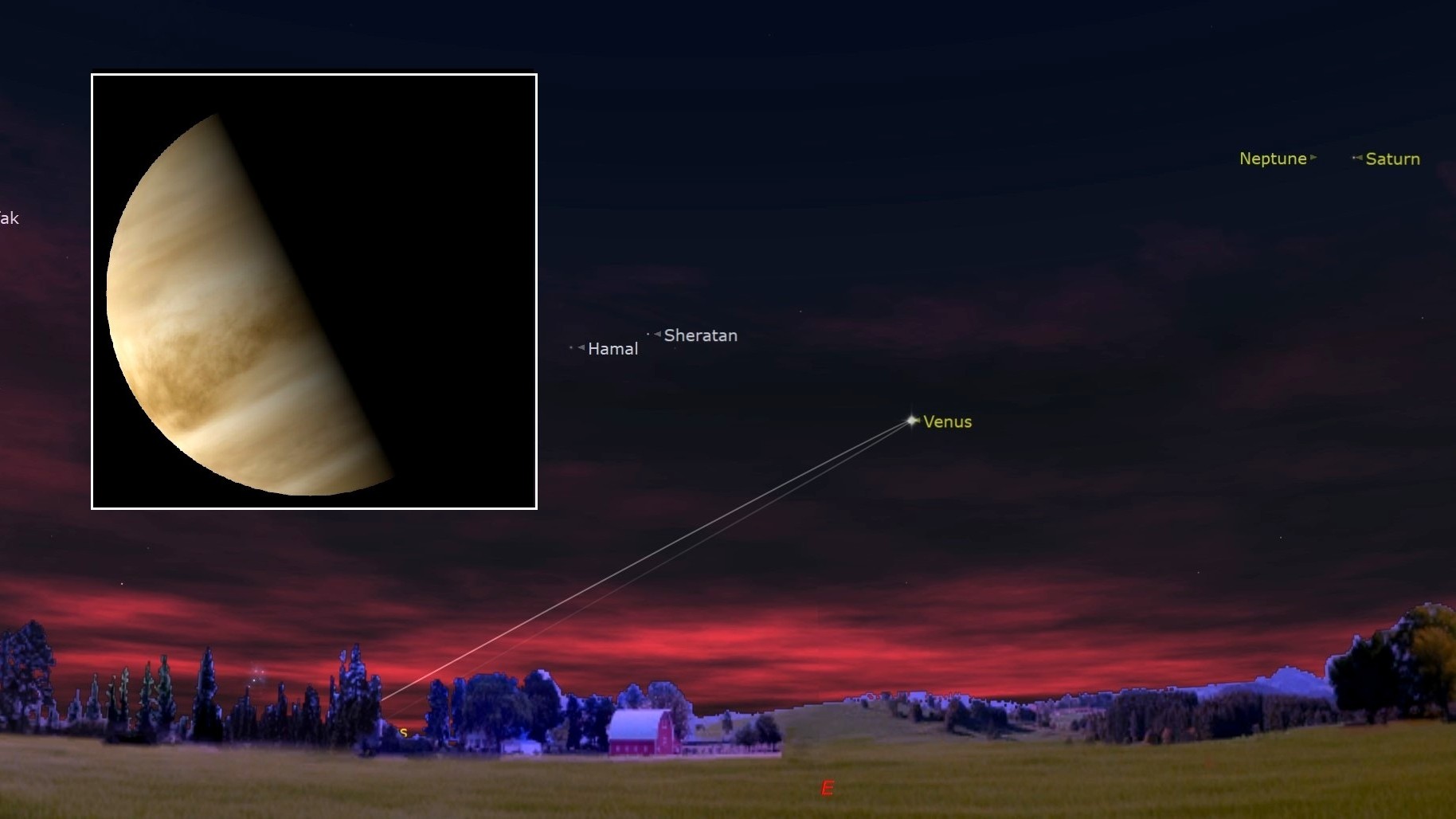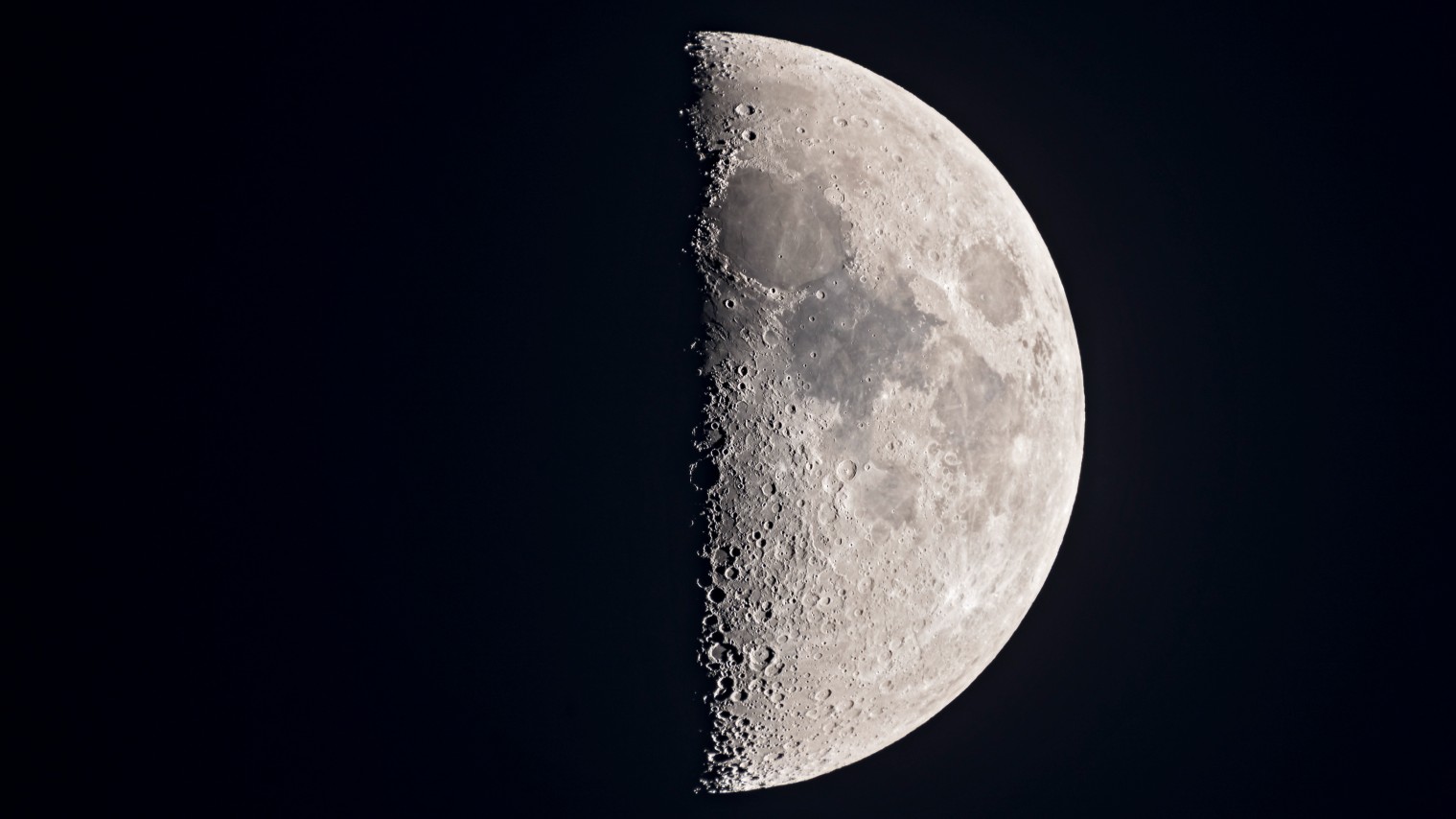Venus is at its farthest from the sun on June 1: Here's how to see the bright 'morning star' this weekend
Venus will rise in the eastern sky in the pre-dawn hours of June 1 alongside Saturn and Neptune.

Venus reaches its point of greatest western elongation on June 1, at which time the dazzling 'morning star' will be at its most distant point from the sun in Earth's sky during its pre-dawn apparition.
The rocky planet will hit the orbital milestone at 00.00 a.m. EDT (0400 GMT) on June 1, while Venus is below the horizon for skywatchers in the U.S, according to stargazing website EarthSky.org. At this time, Venus will be separated from the sun by a gulf of 46 degrees along the line of the ecliptic, which is the apparent path taken by the sun and planets as they journey through the constellations crowding the night sky.
The best time to spot Venus for stargazers in the U.S. is during the pre-dawn hours on May 31 and June 1, when the planet will appear as a bright, magnitude -4.3 morning star rising over the eastern horizon, easily visible to the naked eye (remember, the brightest objects in the sky have lower or negative magnitudes). You'll need a telescope with an aperture of at least 60mm (2.4") to see the planet's disk, which appears half lit at this point in the Venutian orbit, according to telescope-maker Celestron.
Venus has been a regular fixture in the morning sky following its inferior conjunction on March 22, when it passed between Earth and the sun, marking an end to its evening appearances. Its tight orbit around the sun ensures that Venus never strays far from the horizon, at least in comparison to Mars, Jupiter, Saturn, Uranus and Neptune, whose distant orbits allow them to be seen throughout the night when conditions allow.

Want to see the planets of our solar system for yourself? The Celestron NexStar 4SE is ideal for beginners wanting quality, reliable and quick views of celestial objects. For a more in-depth look at our Celestron NexStar 4SE review.
While June 1 may mark the point of greatest separation between the sun and Venus during its morning apparition, it won't be the highest that the planet will rise above the eastern horizon over the coming months. This is because a planet's altitude in the sky is dependent in part on the inclination of the ecliptic relative to the horizon, which shifts throughout the year due to Earth's wobbling orbit.
Editor's Note: If you would like to share your astrophotography with Space.com's readers, then please send your photo(s), comments, and your name and location to spacephotos@space.com.
Get the Space.com Newsletter
Breaking space news, the latest updates on rocket launches, skywatching events and more!
Join our Space Forums to keep talking space on the latest missions, night sky and more! And if you have a news tip, correction or comment, let us know at: community@space.com.

Anthony Wood joined Space.com in April 2025 after contributing articles to outlets including IGN, New Atlas and Gizmodo. He has a passion for the night sky, science, Hideo Kojima, and human space exploration, and can’t wait for the day when astronauts once again set foot on the moon.
You must confirm your public display name before commenting
Please logout and then login again, you will then be prompted to enter your display name.
